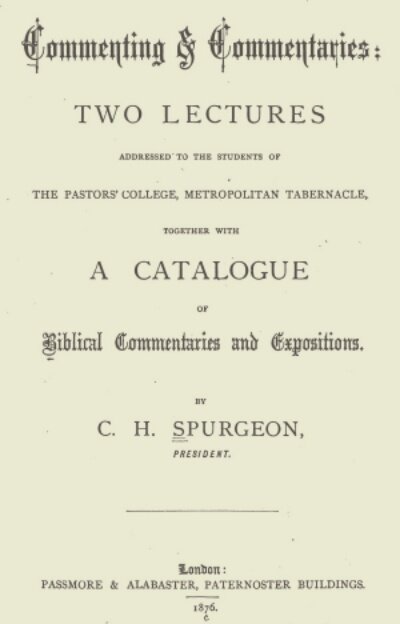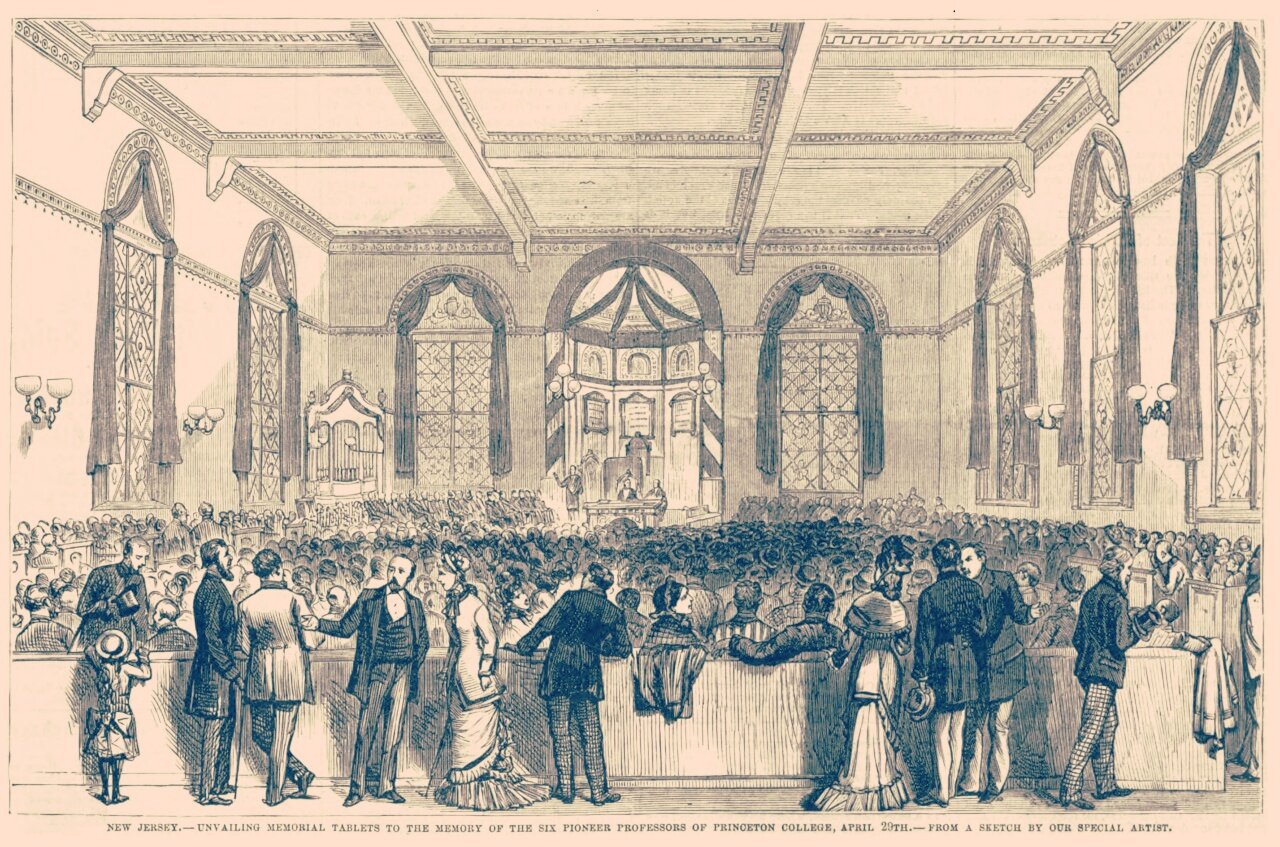Receive our blog posts in your email by filling out the form at the bottom of this page.
Geerhardus Vos has often been referred to as “the father of Reformed Biblical theology.” Although his name is popularly associated in the minds of many with its origin, in fact, Biblical theology is a discipline of theological study that predates Vos, and his famous inaugural lecture as Professor of Biblical Theology at Princeton Theological Seminary, titled The Idea of Biblical Theology as a Science and as a Theological Discipline, which was delivered in 1894. To provide a simple definition for purposes of this article given by Vos himself, “Biblical Theology is that branch of Exegetical Theology which deals with the process of the self-revelation of God deposited in the Bible” (Biblical Theology [1948], p. 13). John Murray added later: “There is no better definition of Biblical Theology known to the present writer than that given by Dr. Vos” (Biblical Theology: A Book Review [1948]).
A September 2021 article by J.V. Fesko titled “Who Lurks Behind Geerhardus Vos? Sources and Predecessors” delves into the question of which sources Vos drew upon and who might be considered forerunners of Biblical Theology as Vos understood it. Fesko references two sources cited by Vos himself: “Anglican theologian Thomas D. Bernard (1815-1904) and German New Testament scholar, Karl Friedrich Nösgen (1835-1913).” Fesko also highlights an important comment made by Francis L. Patton in his 1903 lecture on Theological Encyclopedia: “I think I do not err in saying that, at least so far as we in America are concerned, Jonathan Edwards is the father of Biblical Theology.” The reference that Patton had in mind is to Edwards’ famous treatise on A History of the Work of Redemption (1774).
Most scholars identify the origin of Biblical Theology as a distinct discipline with J.P. Gabler’s (1753–1826) inaugural lecture delivered at the University of Altdorf, An Oration on the Proper Distinction between Biblical and Dogmatic Theology and the Specific Objectives of Each (1787), although some acknowledge even earlier attempts to demonstrate the progress of God’s revelation historically considered in Scripture, such as John Owen’s Latin treatise Theologoumena Pantodapa (1661), translated into English as Biblical Theology: The History of Theology from Adam to Christ (1994), which J.I. Packer described as a “proto-Biblical Theology.”
Other European forerunners of Biblical Theology could be highlighted, but to narrow the focus of our interest to American forerunners, we return to Jonathan Edwards and his History of Redemption, noting that it was published by one of our Log College Press authors, David Austin, in 1793 (the copy found here was owned by Samuel Miller). It goes beyond the close of canon to encompass “post-Biblical” history, but it takes the approach that God revealed himself more and more historically in the development of Scripture. This is consistent with Edwards’ historicist postmillennial eschatology, although we understand the eschatology of Vos to be amillennial. Fesko: “Edwards’s plan was to trace the line of revelation through history, which is the essence of Vos’s method. In fact, one historian has described Edwards’s procedure as showing how revelation is progressive, organic, and finds its eschatological realization in Christ; themes that resonate in Vos’s own method.”
Prior to his death in 1863, Charles Colcock Jones, Sr. wrote The History of the Church of God During the Period of Revelation, which his son published in 1867. It covered the Old Testament period along a plan which showed the progression of God’s dealings with his people. A companion volume covering the New Testament period does not seem to have been published. Jones argued that the “Word of God [was] one harmonious whole: one continuous revelation and development of the covenant of grace” (p. 141), which Jones labored in this volume to “unfold.”
It was close to this same time that Stuart Robinson published Discourses of Redemption: As Revealed at “Sundry Times and in Divers Manners,” Designed Both as Biblical Expositions For the People and Hints to Theological Students of a Popular Method of Exhibiting the “Divers” Revelations Through Patriarchs, Prophets, Jesus and His Apostles (1866). Here he attempted “to follow the development of the one great central thought of the Book through the successive eras of revelation” (p. iv).
Before the establishment of a chair in Biblical Theology at Princeton, such a post was founded at Union Theological Seminary in New York which was filled by Charles A. Briggs in 1891. Previously, he had published an important essay on Biblical Theology (1882), in which he goes over the history of this branch of theology, focusing on its German development, and worked “for some years past” in developing a department dedicated to this field, according to Briggs in The Edward Robinson Chair of Biblical Theology in the Union Theological Seminary, New York (1891). In that inaugural address he acknowledges the precedence of American scholars Edward Robinson and Moses Stuart in this field: “Edward Robinson was the pupil of Moses Stuart, the father of Biblical learning in America.” His definition of the discipline is similar to that of Vos: “Biblical Theology is that Theological Discipline which presents the Theology of the Bible in its historical formation within the Canonical Writings” (Biblical Theology [1882]). Briggs, however, supported Old Testament Higher Criticism; while Vos argued that “Biblical Theology is suited to furnish a most effective antidote to the destructive critical views now prevailing” (The Idea of Biblical Theology).
When Vos was inaugurated as Professor of Biblical Theology at Princeton in 1894, it was Abraham Gosman, who had studied under Archibald Alexander and Samuel Miller, who delivered the charge (James McCosh gave the benediction), and in his address he credited Joseph Addison Alexander and Caspar Wistar Hodge, Sr. as early precursors of this theological discipline. Gosman claimed that although Biblical Theology as a department was new, the path had been paved before by those men and others. And he spoke of the place of Biblical Theology within the scope of theological study as a whole:
Biblical Theology stands in close relations both to Exegetical and Systematic Theology, and yet has its own well-defined bounds. It presupposes Exegetical Theology; it furnishes the material for Systematic Theology. If Systematic Theology is, as we may conceive it to be, the finished building, harmonious in its proportions, symmetrical and beautiful; then Exegetical Theology may be regarded as the quarry from which the material is taken; and Biblical Theology, as putting the granite blocks into form, not polished and graven, but shaped and fitted for the place they are to fill, as the structure grows in its vastness and beauty. It seeks the saving facts and truths as they lie in the Word, and are embedded, and to some extent expressed, in the history of the people of God. God's methods are always historical and genetic, and it conforms to His methods. It views these words and facts in their historical relations and their progressive development. It aims not merely to arrive at the ideas and facts as they appear in particular authors and in the books justly ascribed to them, and as they may be modified in their form by time, culture, influences friendly or hostile; but to set forth these facts and truths thus ascertained in their relation to the other books in which they may appear in clearer light, — to trace their progress and unfolding from the germ to the ripened fruit. As the stream of sacred history runs parallel with that of revelation, it borders closely upon Historical Theology. But the two conceptions are distinct.
Gosman grasped the role of Biblical Theology within the various branches of theological study, and how it fits into the overall goal of making known and vindicating the truth, that is, through “the more complete and orderly unfolding of it, as it lies in the Word, and for the confirmation of the faith of God's people.”
In this brief look at earlier American forerunners of a discipline that is so closely associated in the minds of many today with Geerhardus Vos, we can see, as Fesko suggests, that there were currents of development both in Europe and America prior to his 1894 inauguration at Princeton. The idea of historical development in the field of Biblical Theology itself, of course, makes logical sense, but it is easy to overlook. The details of this historical development warrant much greater study and explanation — or unfolding — than is found here, but at the very least we can say that Biblical Theology did not spring fully formed from Vos’ mind like Athena from the mind of Zeus in Greek mythology. But — like B.B. Warfield, who said that “He was probably the best exegete Princeton ever had” [Letter, Louis Berkhof to Ned B. Stonehouse, December 21, 1954], and John Murray, who wrote that “Dr. Vos is, in my judgment, the most penetrating exegete it has been my privilege to know, and I believe, the most incisive exegete that has appeared in the English-speaking world in this century” [Eerdmans Quarterly Observer and inside jacket cover of original edition of Biblical Theology (1948)] — we do appreciate and recognize the influence of Vos on the method of Biblical Theology as he built on what preceded him and put his stamp on the discipline going forward.





















